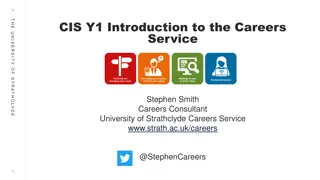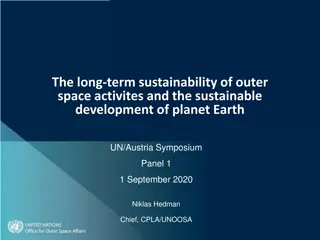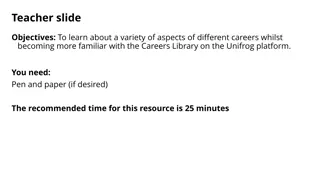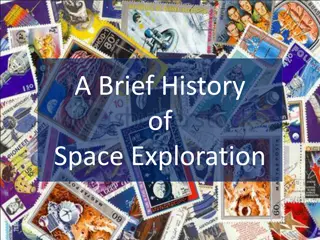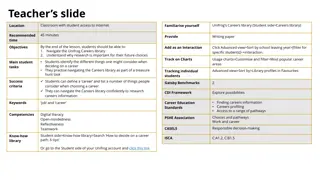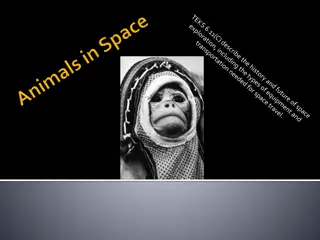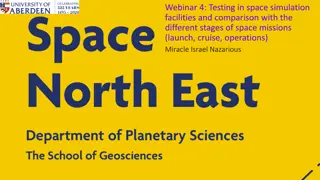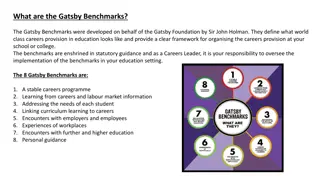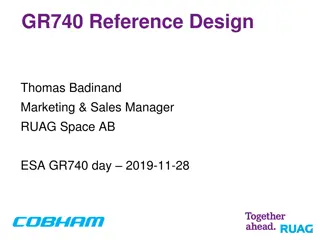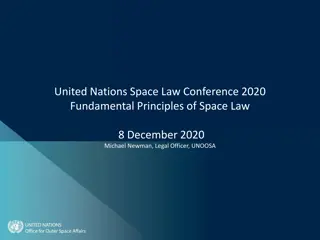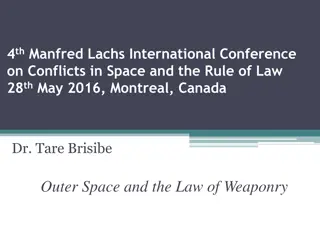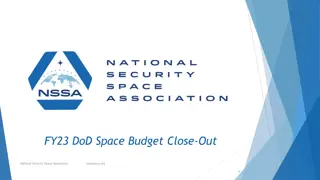Space Careers Wayfinder
Scientific models estimate around 27,000 objects larger than 10 cm floating in space, monitored by the US Space Surveillance Network. Neumann Space has developed unique propulsion systems utilizing Newton's laws of motion to maneuver satellites and spacecraft. Explore the application of forces and Newton's laws in space careers and understand how lower output propulsion systems can move crafts in space efficiently.
Download Presentation

Please find below an Image/Link to download the presentation.
The content on the website is provided AS IS for your information and personal use only. It may not be sold, licensed, or shared on other websites without obtaining consent from the author.If you encounter any issues during the download, it is possible that the publisher has removed the file from their server.
You are allowed to download the files provided on this website for personal or commercial use, subject to the condition that they are used lawfully. All files are the property of their respective owners.
The content on the website is provided AS IS for your information and personal use only. It may not be sold, licensed, or shared on other websites without obtaining consent from the author.
E N D
Presentation Transcript
STUDENT RESOURCE Space Careers Wayfinder Forces and Newton s Laws The number of objects reported to be floating around in space vary, but scientific models estimate around 27 000 objects larger than 10 cm. As we add to this number the likelihood of a collision increases. The US Space Surveillance Network (SSN) monitors the majority of these objects and advises relevant parties of any potential impacts. Depending on the probability of a collision any craft likely to be impacted can be manoeuvred out of harm s way. Neumann Space have developed a propulsion system which is capable of carrying out such evasive manoeuvres on small CubeSat sized satellites. The propulsion system is unique in utilising a solid metallic rod as propellant. The metallic rod can be made on Earth and in space from any solid conductive metal or alloy, including the various metals already in orbit around the Earth. Newton s laws of motion A rocket leaving the Earth s surface does so as a result of the immense energy from the hot gases expelled through the nozzles of the engines. Propulsion systems which may not have the capacity to launch a craft into space from Earth may well find application under different conditions. Neumann s Drive is one such in space propulsion system. The system developed by Neumann Space produces a plasma from a solid metal fuel. The generated plasma is then used to provide thrust and propel the craft. 1. Why is it possible to move a craft in space with a propulsion system of much lower output than needed to get the craft out into space? 2. Earth orbiting craft such as satellites including the International Space Station are monitored closely by ground stations. Should the craft begin to deviate from its planned trajectory an onboard propulsion system is initiated to correct the deviation. During the correction process which of Newton s Laws of Motion apply? Assume the craft is travelling at a constant speed. Explain your choice. 1 FORCES AND NEWTON S LAWS STUDENT RESOURCE
Newtons First Law 3. A spacecraft travelling at a constant velocity on course for the Earth s Moon begins to change velocity as it approaches the surface of the Moon. The change in velocity becomes more pronounced as the craft gets closer to the surface of the Moon, all this happens without any input from the crew. What could be causing the change in velocity and how does this relate to Newton s 1st Law? 4. If you were travelling in the spacecraft towards the Moon at a constant speed of 32 000 km/h and your friend in their spacecraft is travelling at a constant speed of 20 000 km/h. Who is experiencing the greater acceleration? a. You b. Your friend c. Neither you nor your friend 5. Which one of the following best describes Newton s First Law? a. Every action has an equal reaction b. Objects tend to stay at the same velocity unless an external force acts on it c. Acceleration of an object is proportional to the force d. A force that holds an object in orbit 2 FORCES AND NEWTON S LAWS STUDENT RESOURCE
Newtons Second Law Watch this NASA STEMonstrations video on the demonstration of Newton s Second Law on the International Space Station. 6. If you apply the same force of 100 N to three different objects with masses 1 g, 1 kg, and 100 kg respectively, then determine the resultant acceleration in each case and fill in your answer in the table below: Acceleration (m/s2) Mass (kg) 0.001 1 100 Describe the relationship between mass and acceleration. Does this make sense? In your answer refer to Newton s First Law. Newton s Third Law 7. Imagine an inflated balloon full of air where the hole is currently being pinched. a. Identify the action/ reaction pair of forces on the image below when the balloon is released. 3 FORCES AND NEWTON S LAWS STUDENT RESOURCE
Hands-on activity: Balloon cars Materials Balloon Cardboard for body Cardboard for wheels (alternative: bottle tops, CDs) 1 straw, x2 BBQ skewers Sticky tape Blu tack Scissors Instructions 1. Cut the cardboard into a rectangle, where the width is just shorter (20 mm-30 mm) than the length of a straw or skewer this becomes the body of the car Cut four equal sized circles with the cardboard. Puncture a hole in the centre of each circle or fill the bottle top with Blu tack. These will be the wheels Cut the straw in half. These straws become the housingof the axles . Tape the straw axles down near the ends of the body of the car Insert skewers into both axle housings. Attach the wheels to the ends of the skewers Attached balloon s hole over a straw using sticky tape and attached on the top rear end of the body of the car, such that the straw becomes the exhaust pipe Blow up balloon via straw Place car on the ground and let it go Think about improvements in design and/or have fun by performing races with fellow students 2. 3. 4. 5. 6. 7. 8. Exercise using the Balloon car Additional material: Pen and paper / computer Measuring tape String Instructions: 1. 2. Blow up balloon to a particular size (e.g., quarter, half, three-quarters, or full) Use string in combination with measuring tape to measure circumference of balloon after gently squeezing it into a more spherical shape (record in table) Estimate the volume of the balloon using the volume of a sphere equation V = 4/3 x x radius3, where radius = Circumference/(2 ) (record in table) Calculate the volume of balloon (record in table) Release balloon from starting location and measure distance travelled (record in table) Repeats steps 1 5 for different balloon sizes as desired. Plot values Distance travelled against Volume of balloon using pen and paper or computer. Determine which is the independent variable and the dependent variable. 3. 4. 5. 6. 7. 8. Approximate amount of air Circumference of balloon Radius of balloon Approx. Volume of Balloon Distance travelled by balloon Car [cm3] [suggested sizes] Quarter full Half full Three quarters full Full [cm] [cm] [cm] 4 FORCES AND NEWTON S LAWS STUDENT RESOURCE
Discussion questions: What is the relationship between distance travelled and the volume of the balloon? How does this relate to Newton s Third Law? What are variables that contribute to the uncertainty of the results? Safety Hazard: Use of scissors Potential harm: bodily injury Control: When using scissors always cut away from the body and fingers. Classroom Activity 2: Space Travel Skill focus: Problem solving 1. Draw force diagrams for a rocket in two situations: a. At rest on the ground b. Travelling at constant speed (Assuming only vertical motion) 2. If a rocket has a mass of 1000 tonnes plus a starting fuel mass of 500 tonnes: a. Calculate the total rocket (+ fuel) weight at rest. b. For five minutes after take-off, the rocket expends all its fuel. Calculate the rocket s thrust if it managed to keep a constant velocity of 6000 m/s. Ignore any drag components Using: Thrust = velocity x change in mass (kg) / change in time (s) T = v x dm/dt 5 FORCES AND NEWTON S LAWS STUDENT RESOURCE
Hands-on activity: Water rocket activity or stomp rocket activity (Optional if equipment is available) Safety Hazard: Pressure build-up in plastic bottle to create projectile Potential harm: bodily injury Control: Always have a teacher and/or supervisor present and make sure any projectile is pointed away from people when ready to launch. Wear safety glasses for this activity Classroom Activity 3: Rocket Launch Code Club Australia Skill focus: coding Rocket Launch Code Club Australia Rocket Launch | Code Club Australia Additional resources Space Technology Future Science Platform CSIRO Centre for Earth Observation CSIRO Low Earth Orbit Visualization LeoLabs, Inc (2023) Galileo & Newton CSIRO/ATNF ESA s Space Environment Report European Space Agency (2022) What are Newton s Laws of Motion? NASA (October 2022) Space: A Roadmap for unlocking future growth opportunities for Australia CSIRO (2018) What is Thrust? NASA (July 2022) Rocket Nozzle Interactive Simulator NASA (August 2022) CubeSat CSIRO (December 2018) 6 FORCES AND NEWTON S LAWS STUDENT RESOURCE SPACE CAREERS WAYFINDER IS A COLLABORATION BETWEEN THE CSIRO AND THE AUSTRALIAN NATIONAL UNIVERSITY
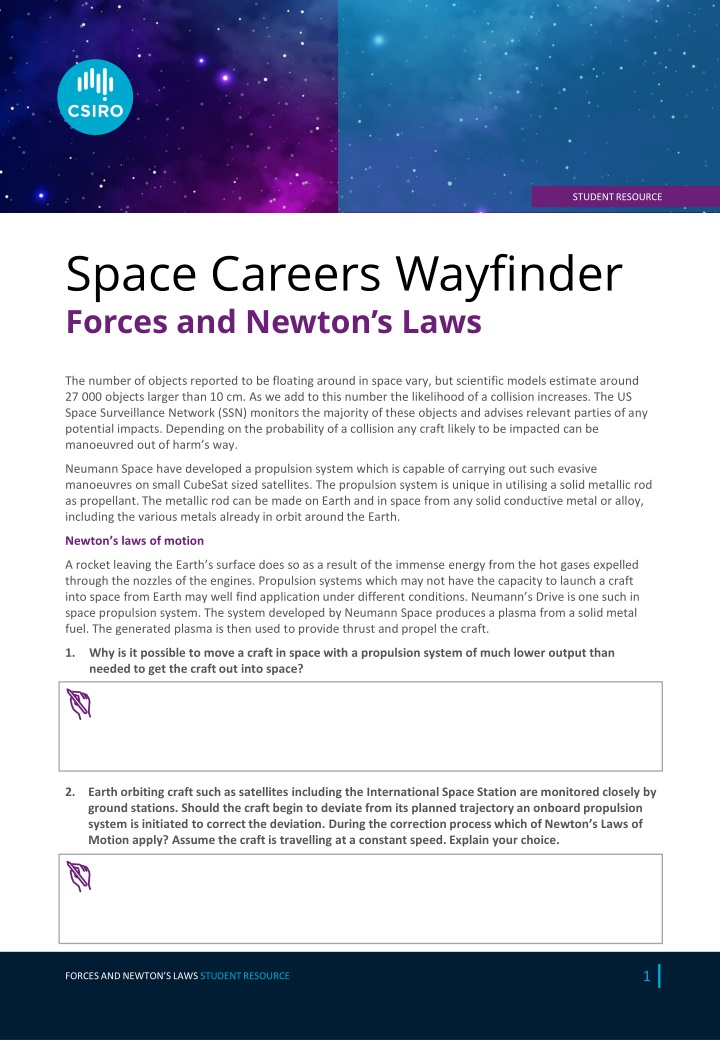

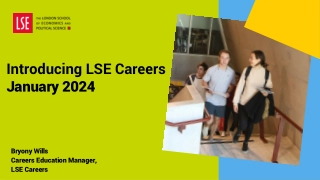
![Read⚡ebook✔[PDF] Linking the Space Shuttle and Space Stations: Early Docking Te](/thumb/21519/read-ebook-pdf-linking-the-space-shuttle-and-space-stations-early-docking-te.jpg)
![READ⚡[PDF]✔ Emerging Space Powers: The New Space Programs of Asia, the Middle Ea](/thumb/21554/read-pdf-emerging-space-powers-the-new-space-programs-of-asia-the-middle-ea.jpg)
